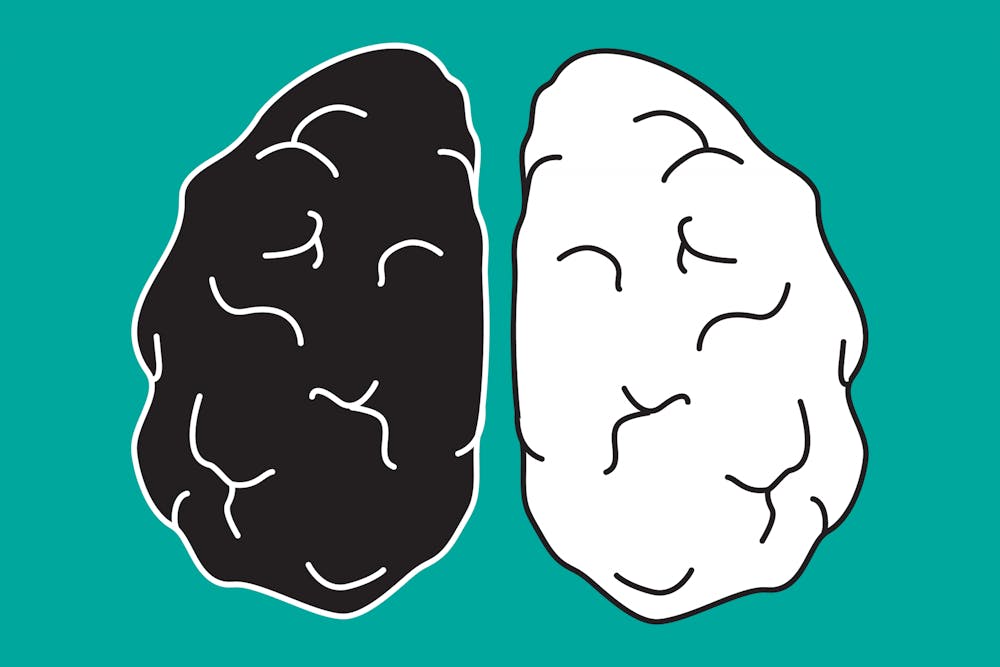
Mental health continues to be a persistent concern for many students at Penn, and as discussions surrounding the subject rightfully expand, it’s crucial for us to consider some of the unique mental health barriers faced by Penn’s racial and ethnic subpopulations.
According to the American Psychiatric Association, most ethnic or racial minorities in the United States have similar or fewer mental disorders than white Americans, but the consequences of mental illnesses among minorities are longer lasting, a finding that’s more alarming when considering that minorities receive poorer quality of healthcare nationally overall.
Here at Penn, a university which boasts a profoundly diverse student population, such disparities in mental healthcare can be especially significant. “I’ve met with many minority and international students at Penn who often express how they don’t have the same support groups that other students have because mental health is a topic that’s just shunned in their households,” says College junior Nicole Harrington, the president of Penn Initiative For Minority Mental Health. Harrington’s experiences have an empirical basis too; The American Psychiatric Association has cultural stigma listed as a major barrier to mental healthcare that is shared by both Hispanic and Black populations. In a New York Times piece, writer Dana Givens calls attention to the fact that Black culture “teaches us that we do not have the privilege of being vulnerable like other communities” — a hurdle that’s shared by members of other cultural groups as well. Asian Americans, for example, are the least likely group to seek out mental health assistance, largely due to factors that are heavily tied to their culture. “A [person of color] cannot just say that ‘I talked to my therapist today,’ because there is an added stigma for us in addition to the one that already exists,” says Harrington.
Furthermore, minority-identifying students at Penn can find it harder to be open about their mental health because they tend to be pushed aside when such conversations do arise. “If I was in class and we were talking about mental health, people wouldn’t be so receptive to the minority-identifying students because the majority-identifying ones don’t resonate with us as much,” says Harrington. And because honest conversations can be a vital component of de-stigmatizing mental illnesses, shunning the voices of people of color during such discussions only exacerbates the issue. The good news, however, is that steps can be taken by all of us to assist our minority-identifying peers.
A good starting point is to engage in more conversations centered on the mental health of minority students in particular. “Being open — with one’s self and with others — is vital when it comes to taking care of ourselves,” said Batsirai Bvunzawabaya, the director of Outreach and Prevention Services at Penn’s Counseling and Psychological Services. And when conversations surrounding mental health do arise, majority-identifying students should learn to be more receptive to their minority counterparts by validating their experiences more — a notion that, according to Dr. Bvunzawabaya, can be greatly reassuring. Additionally, we should ensure that minority students are granted an equal platform during conversations regarding mental health, especially given that their voices are frequently subdued otherwise.
Minority students can also better support themselves by taking advantage of the existing on-campus resources. “Give CAPS a chance!” says Harrington. Some common concerns that students cite in regards to CAPS is that they believe it’s underfunded or provides a low quality of care, which can further deter minority-identifying students who already feel isolated. But such notions are only misconceptions. Funding for CAPS has increased significantly over the years, and their services continue to expand. Students using CAPS should make sure to advocate for themselves by choosing therapists that match their specific preferences and needs. However, even if our preferences cannot be immediately met by CAPS, we should still give their services a chance. “There will be people who will say, ‘Oh my therapist is white, therefore I can’t give it a chance,’ but this isn’t necessarily true. I had a white therapist previously and I found her to be great,” says Harrington.
The Penn experience is no doubt stressful, and as students we owe it to ourselves to look after our mental well-being. Equally important, however, is for us to do our part in ensuring that our peers of different backgrounds may thrive as well. We should set aside time to better understand each other’s unique backgrounds, and utilize this knowledge to uplift each other. This way, we can collectively pave a new path towards rectifying disparity.
ASAAD MANZAR is a College senior studying neuroscience from Dallas, Texas. His email is asaad01@sas.upenn.edu.
The Daily Pennsylvanian is an independent, student-run newspaper. Please consider making a donation to support the coverage that shapes the University. Your generosity ensures a future of strong journalism at Penn.
Donate







